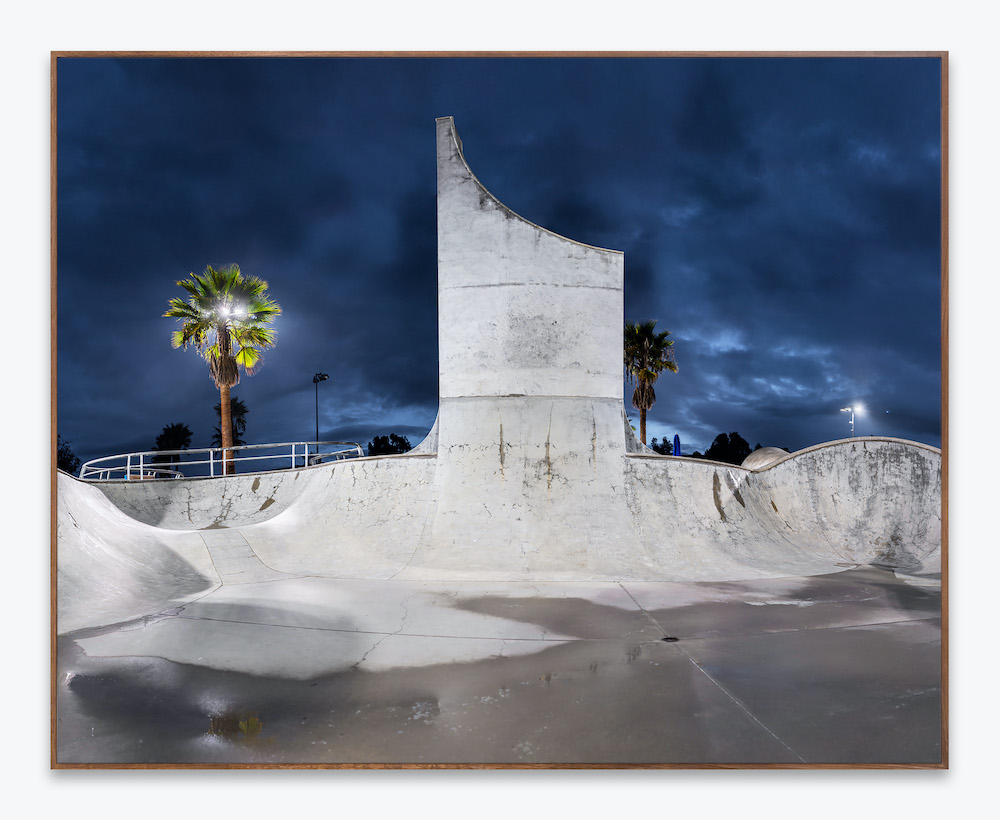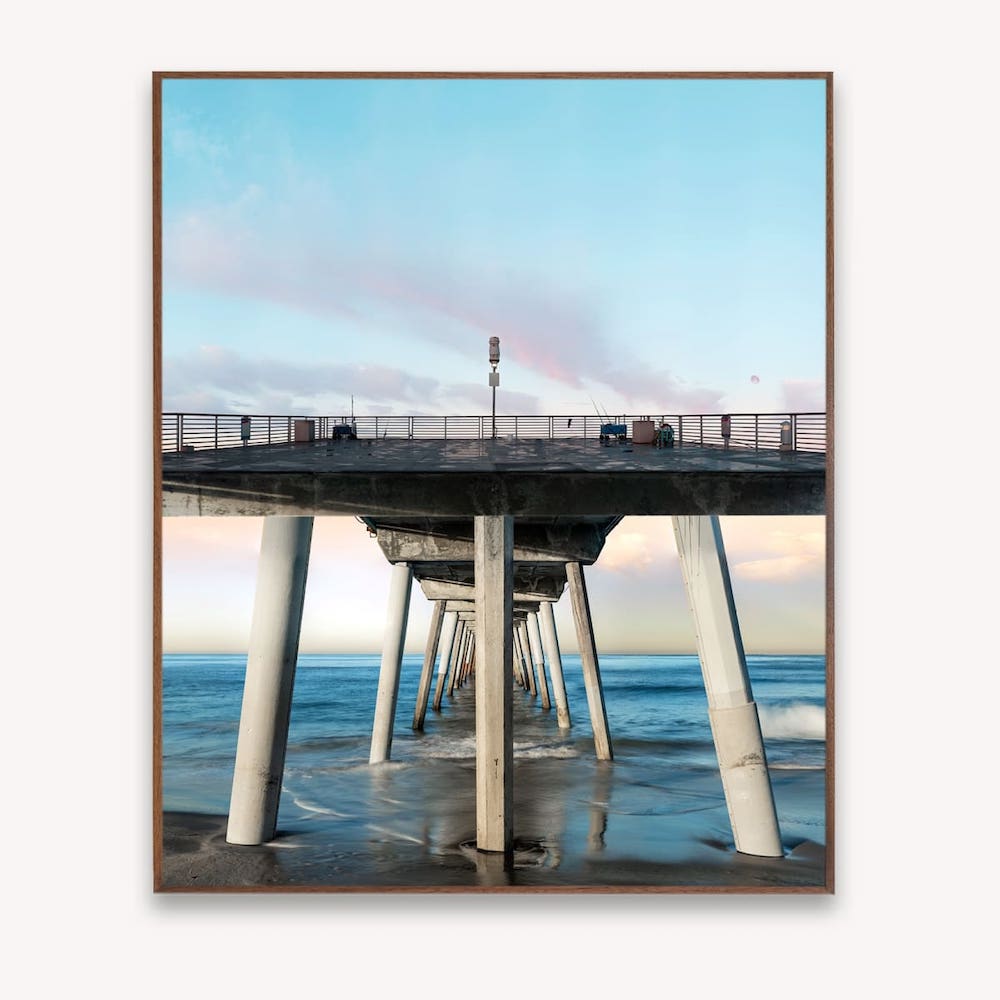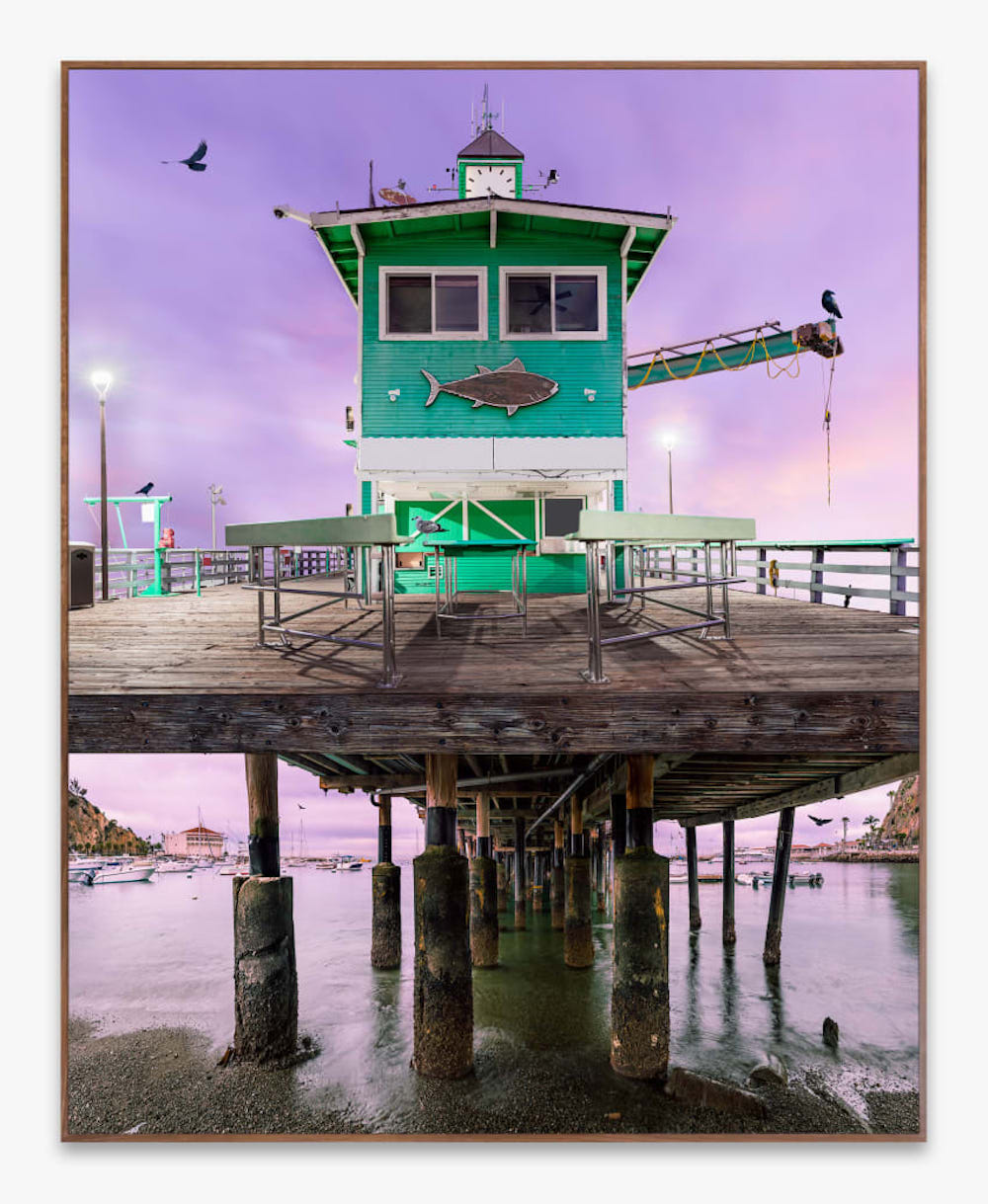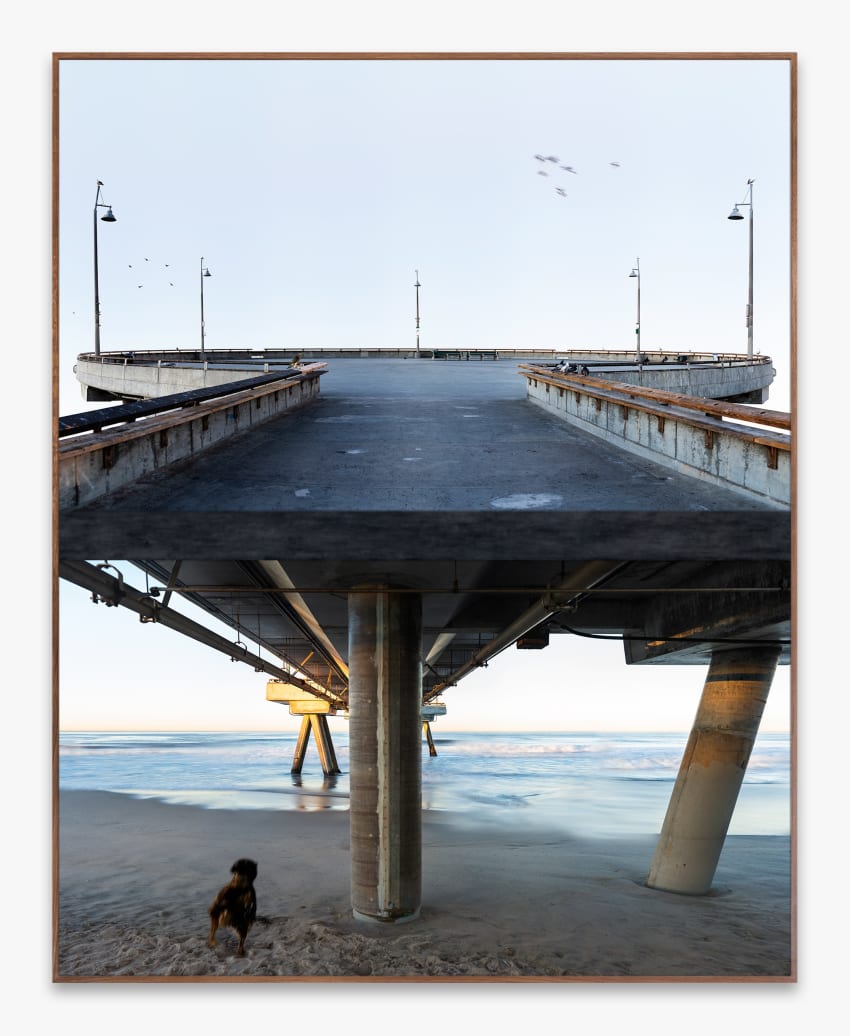Amir Zaki’s exhibition ‘On Being Here’ presents hyper-real, large-scale color photographs of piers in Southern California. In each image, Zaki divides the composition into two sections, juxtaposing a view on the pier looking towards the ocean with another from the beach of the various pylons that extend into the surf and hold up the pier. Viewing the exhibition prompted me to compare my actual experience of the Venice Pier to Zaki’s image of it, and to reflect upon the many ways digital photography combines truth and fiction. On a recent run, I became aware of the long length of the pier as I crossed over sand and then sea to the circular endpoint and the expansive view of the ocean. From that position on the pier it is impossible to see its supports, whereas from the beach or at the shoreline, the pier’s top is invisible and the understructure becomes foregrounded. This duality is at the root of Zaki’s project.In previous bodies of work, Zaki explored the natural landscape as well as vernacular architecture of Southern California, shooting hundreds of images with Gigapan technology that allows him to digitally stitch them together into the final scene. For Empty Vessels (2019), he photographed skateboard parks emphasizing their bunker-like architecture as vast, empty, concrete spaces with curiously sensuous and curvy mounds. In Getting Lost (2018), he created mysterious and evocative photographs of what appeared to be conversations among illuminated trees at night. Other series include manipulated photographs of elevated lifeguard towers and impossibly cantilevered buildings jutting out of hillsides and cliffs.

Amir Zaki, Concrete Vessel 71, 2019. Courtesy of the artist.
Zaki’s latest works, while photographic, draw from Cubism where different views of a subject are seen at the same time, often depicted as abstracted fragments. Zaki’s notion of simultaneity is more straightforward and subtle, as his images are not abstract, yet they present multiple images almost seamlessly combined into one. To create the images that comprise On Being Here, he visited numerous California piers in the pre-dawn hours, capturing hundreds of images of both the top and bottom of these structures and allowing for differences in light and shadow, as well as occasional birds. Built in 1904. Damaged in 1913 X (all works 2021) is a photograph of the Hermosa Beach pier, though not labeled as such. Instead, Zaki titles the image to call attention to the cycle of construction and destruction that highlights the vulnerability of these vast engineering efforts. Each image is bisected by a digitally rendered horizontal band of wood or concrete that abruptly demarcates the foreshortened edge of a given pier. Below this line is a receding view of the piers supports. Built in 1904. Damaged in 1913 X is a beautifully balanced image, the coloration of bright blue sky above the pier is paralleled in the shimmering blue sea on either side. Looking carefully reveals anomalies—a setting moon too high and small in the sky, an incomplete view of a crashing wave surrounding the base of a concrete pylon. Miscellaneous fishing gear without fishermen are set at the far corners of the pier.

Ami Zaki, Built in 1904. Damaged in 1913 X, 2021. Courtesy of Diane Rosenstein Gallery.
Built in 1906. Damaged in 1908. Renovated in 1907, 1909 X is a photograph of Green Pleasure pier in the town of Avalon on Catalina Island. Here, Zaki focuses on the bright green seafood restaurant located at the end of the pier. In “real life,” it is one of a number of structures on the pier, but in Zaki’s depiction it is alone and surrounded by a dark purple tinted sky. Four birds populate the upper portion of the image, one in flight, the others strategically placed within the composition as if elements in a still life. Most of the bottom section of the image is filled with wooden and concrete supports that grow denser as they recede into the distance. To either side is the harbor filled with boats, hillsides, two flying birds and a non-contiguous lighter purple sky.
Half of the images have buildings on the piers. Zaki depicts this architecture as barren, unpopulated and often boarded up. What is striking in these depictions is the way he positions these structures, highlighting the colors on their facades and cropping in closely to give them a surreal and uncanny presence. The empty piers are just as unsettling. Except for occasional birds and fishing rods, they are vacant images of places usually bustling with life. Devoid of their true dimensionality, they appear like broken appendages resting on misaligned supports, an illusion that results from being shot from multiple vantage points. These works are puzzles that are impossible to figure out. The way Zaki chooses to construct his images from the array of pictures captured by his camera produces photographs that while seemingly true to color and location, are unsettling compilations that represent different aspects of the same scene. Zaki’s mastery of his medium and process and his keen insights into the history of these locations is what gives these photographs their power and lasting presence.

Amir Zaki, Built in 1906. Damaged in 1908. Renovated in 1907, 1909 X, 2021. Courtesy of Diane Rosenstein Gallery.


